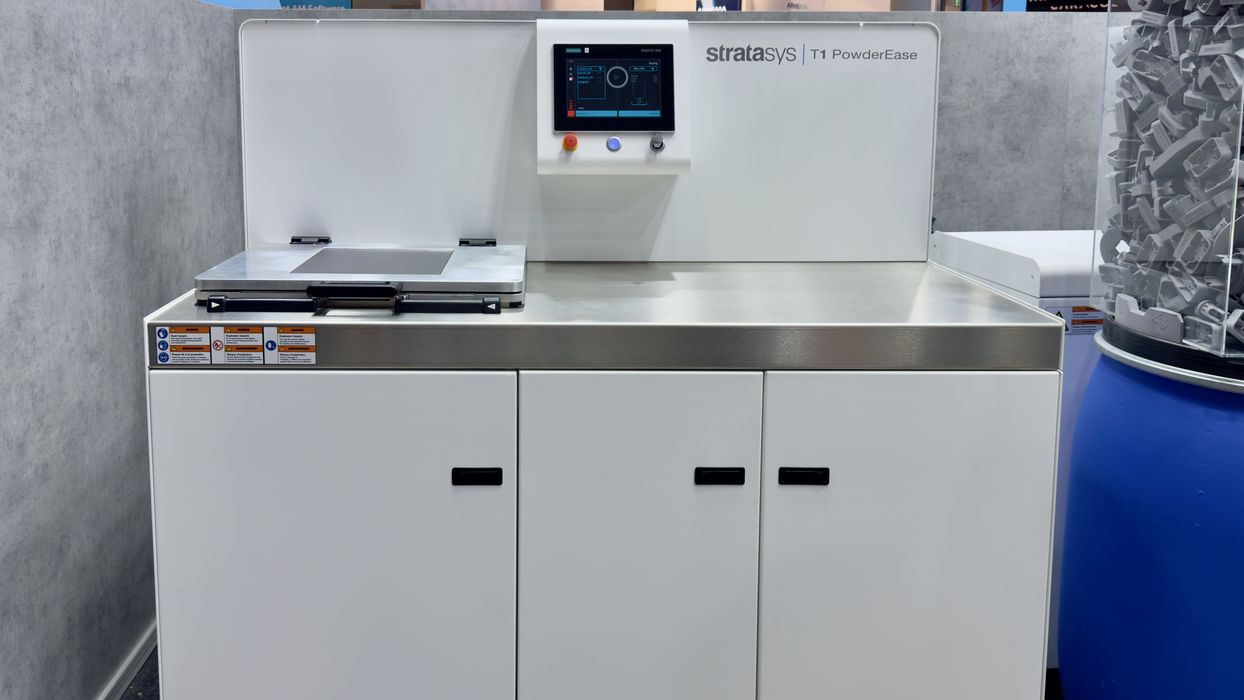
We had a chat with Stratasys about their latest innovation, ReLife.
ReLife is a software solution that allows their SAF systems to make use of leftover PA12 powder from SLS 3D printers.
The SLS 3D printing process involves blasting a laser at a flat bed of (usually) nylon powder to selectively fuse portions together, layer by layer. After an SLS job completes, the unfused powder is considered “used” because it has been exposed to heat during printing, and includes spatters and blobs created by the laser.
You’d think you’d be able to re-use this leftover powder on your next SLS job, but that’s not really the case. Most SLS systems require a ratio of fresh to used powder, sometimes 70% to 30%. In other words, there is usually a huge amount of unusable powder from SLS operations that must be disposed of. That’s becoming a problem in a world where sustainability is becoming important, and where microplastic pollution is a major issue.
Stratasys’ ReLife system allows a huge amount of this leftover SLS powder to be used in their SAF production 3D printing systems. SAF, or “Selective Absorption Fusion” is a different process that involves high-resolution inkjet printheads selectively dropping a special fluid on the powder. The fluid is designed to rapidly heat up when exposed to infrared light, and that’s what happens next: an arm swings over the powder bed, heating up the fluid, which in turn melts the nearby powder. This continues layer by layer until the job completes.
It seems that Stratasys has figured out print parameters for their SAF system to enable use of this leftover powder, as the used powder is not as sensitive to the SAF process.
I asked Stratasys representatives about the process to clarify how it really works.
It turns out that it’s intended for the production of parts where the color doesn’t really matter. In SLS, parts are often dyed, and that requires a consistent white color. That color is compromised by used powder, which is another reason why SLS operators don’t want to use it. But in SAF, many parts are used for mechanical purposes, and color doesn’t matter.
Stratasys explained:
“The use of leftover powder between machines is fairly forgiving, and we’ve figured out a recipe that works.”
According to Stratasys, this can result in massive operational savings for SAF operators, said to be between 20-40%.
They explained to us that ReLife allows SAF operators to select the mix ratio between fresh and used powder based on application needs. It is actually possible to use 100% waste SLS / MJF PA12 powder in their H350 SAF system. The parts are quite usable, but Stratasys advises that for the best quality, operators should consider using fresh Stratasys PA12 powder. They recommend mixing 20% fresh with 80% previously printed Stratasys PA12 powder, which is more than twice the recommended ratio of competing powder systems.
Stratasys does not provide any services related to obtaining the used powder. SAF operators have to make their own arrangements with nearby SLS operations to purchase used powder.
It also turns out that one of the driving forces behind the development of ReLife was the increasing regulations for sustainability, particularly in the EU. In the EU, companies are required to report their emissions generated through the entire manufacturing process. This forces companies to expose their sustainability efforts.
Because of that, many companies are now very keen to adopt more sustainable solutions. Stratasys said the ReLife approach can reduce emissions by up to 89%, mainly due to reduced shipping and the elimination of powder manufacturing steps. That would look very good indeed on an emissions report.
To implement ReLife, Stratasys has also recently released the T1 PowderEase system. This is a post-processing unit for SAF systems, and it handles the powder and parts in a sealed box.
Stratasys explained that the PowderEase uses vibration and suction to completely remove powder from SAF-printed parts in 30-45 minutes. This is quite important because prior to the PowderEase, SAF operators had to do all the powder removal manually, which costs more for labor.
For Stratasys, ReLife could end up being a pretty big deal. It dramatically reduces the cost per part for SAF production, and that could attract more manufacturers to using the unique system. It will also be attractive to current SLS operators, who would find a way to profitably use their waste SLS powder onsite.
Via Stratasys
